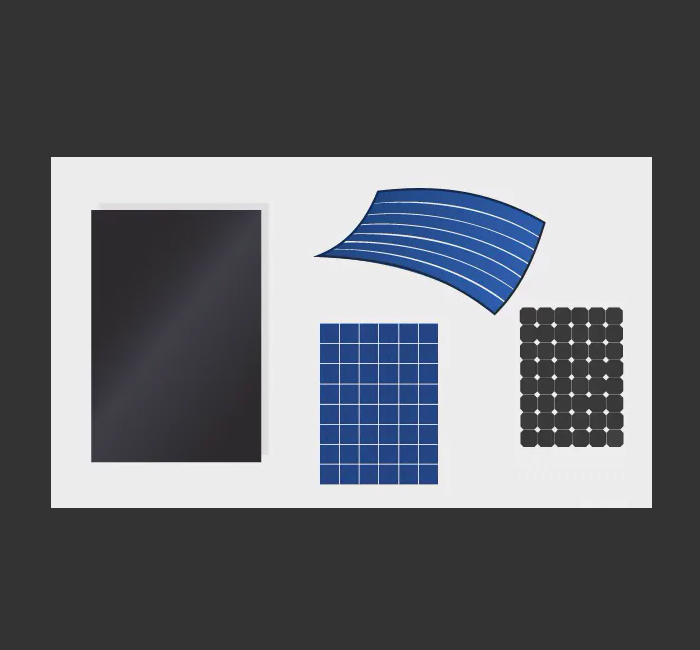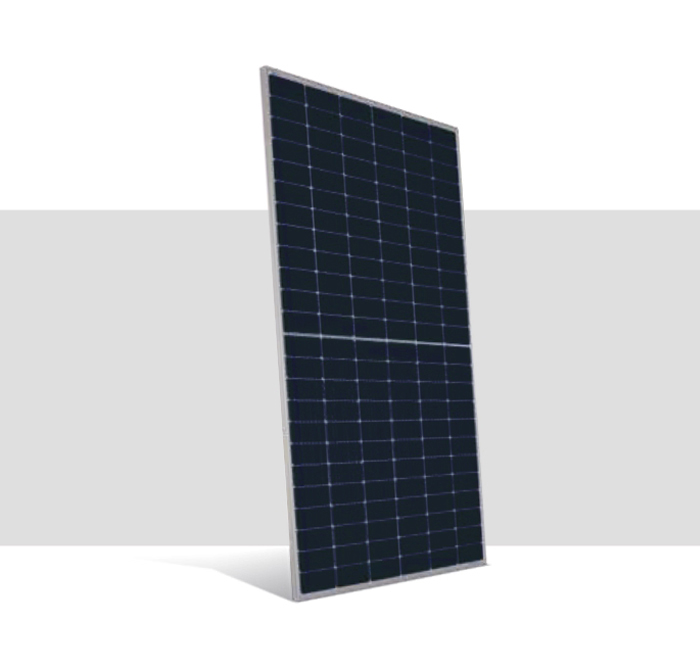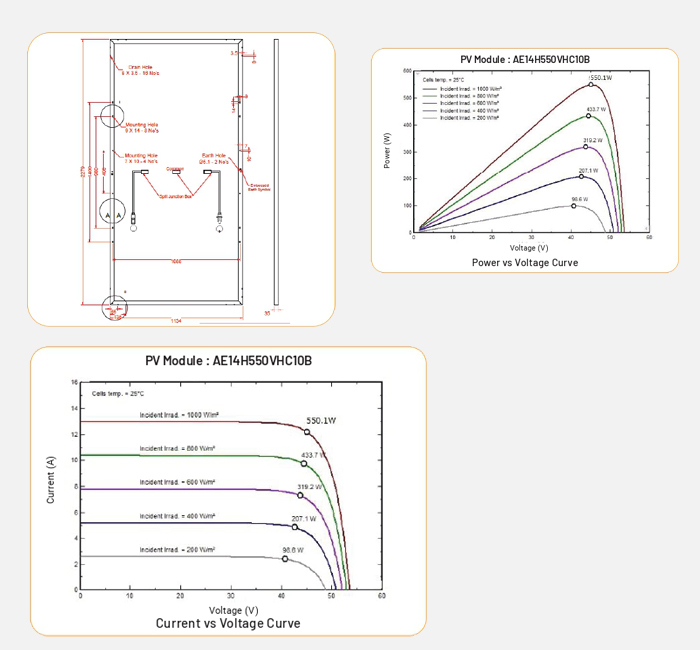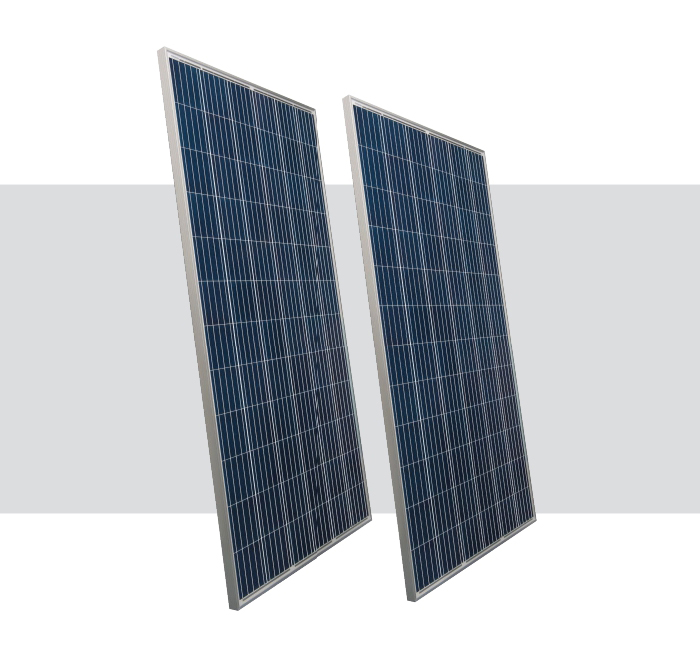Solar Panels
- Home
- /
- Products
Products
Solar Panels

What are the different types of solar panels?
There are three types of solar panels primarily available today: monocrystalline, polycrystalline (also known as multi-crystalline), and thin-film. These solar panels vary in appearance, performance, costs, and how they’re made. Depending on the type of photovoltaic (PV) installation you’re considering, one option may be more suitable than the others. In this article, we break down each type of solar panel by cost, materials, appearance, and efficiency to help you understand which one is best for you.
Key takeaways about the different types of solar panels
- The three main types of solar panels are monocrystalline, polycrystalline, and thin-film.
- Monocrystalline solar panels are the most efficient.
- Polycrystalline solar panels can be the most cost-effective.
- Thin-film solar panels can be the best for unorthodox roof styles.
- Use the EnergySage Marketplace to see how much you can save with solar.
What are the major types of solar panels?
There are three major types of solar panels: monocrystalline, polycrystalline, and thin-film. Each type has its own unique advantages and disadvantages – the solar panel type best suited for your installation will depend on your preferences and factors specific to your own property.
Below, we’ll break down some common questions and concerns about solar panels and how different types of panels have varying characteristics.
What type of solar panel is best?
The best solar panel option is the one that aligns with your property and individual needs. For some, the solar panel efficiency rating might be the most important factor, while others may value cost-effectiveness more. Here are some things to keep in mind:
- Crystalline solar panels have the highest efficiency out of all panels.
- Monocrystalline panels are between 15-22% efficient, making them the most efficient of all crystalline panels.
- Polycrystalline panels are between 15-17% efficient and can be the most cost-effective option.
- Thin film solar panels are best for unorthodox roof styles and are the most resilient.
Different types of solar panels have varying costs
The manufacturing processes differ between monocrystalline, polycrystalline, and thin-film; as a result, each type of panel comes with a different price tag.
Monocrystalline solar panels: the most expensive
Of all the solar panel types, monocrystalline panels are likely to be the most expensive option. This is largely due to the manufacturing process – because the solar cells are made from a single silicon crystal, manufacturers have to absorb the costs of creating these crystals. This process, known as the Czochralski process, is energy-intensive and results in wasted silicon (that can later be used to manufacture polycrystalline solar cells).
Polycrystalline solar panels: middle of the road
Polycrystalline solar panels are typically cheaper than monocrystalline solar panels. This is because the cells are produced from silicon fragments rather than a single, pure silicon crystal. This allows for a much simpler cell manufacturing process, thus costing less for manufacturers and eventually end-users.
Thin-film solar panels: it depends!
What you pay for thin-film solar cells will largely depend on the type of thin-film panel; CdTe is generally the cheapest type of solar panel to manufacture, while CIGS solar panels are much more expensive to produce than CdTe or amorphous silicon.
Regardless of the cost of the panels themselves, the overall cost of a thin-film solar panel installation may be lower than installing a monocrystalline or polycrystalline solar panel system due to additional labor requirements. Thin-film solar panel installations are less labor-intensive because they are lighter weight and more maneuverable, making it easier for installers to carry panels up onto rooftops and secure them in place. This means reduced labor costs, which can help contribute to an overall less expensive solar installation.
What are solar panels made out of?
To produce electricity, solar PV cells are made from a semiconducting material that converts light into electricity. The most common material used as a semiconductor during the solar cell manufacturing process is silicon.
What are crystalline solar panels made out of?
Both monocrystalline and polycrystalline solar panels have cells made of silicon wafers. To build a monocrystalline or polycrystalline panel, wafers are assembled into rows and columns to form a rectangle, covered with a glass sheet, and framed together.
While both of these types of solar panels have cells made from silicon, monocrystalline and polycrystalline panels vary in the composition of the silicon itself. Monocrystalline solar cells are cut from a single crystal of silicon. Alternatively, polycrystalline solar cells are composed of fragments of silicon crystals that are melted together in a mold before being transformed into ingots and cut into wafers.
What are thin-film solar panels made out of?
Unlike monocrystalline and polycrystalline solar panels, thin-film panels are made from a variety of materials. The most prevalent type of thin-film solar panel is made from cadmium telluride (CdTe). To make this type of thin-film panel, manufacturers place a layer of CdTe between transparent conducting layers that help capture sunlight. This type of thin-film technology also has a glass layer on the top for protection.
Thin-film solar panels can also be made from amorphous silicon (a-Si), which is similar to the composition of monocrystalline and polycrystalline panels. Though these thin-film panels use layers of silicon in their composition, they are not made up of solid silicon wafers. Rather, they’re composed of non-crystalline silicon placed on top of glass, plastic, or metal.
Lastly, Copper Indium Gallium Selenide (CIGS) panels are another popular type of thin-film technology. CIGS panels have all four elements placed between two conductive layers (i.e. glass, plastic, aluminum, or steel), and electrodes are placed on the front and the back of the material to capture electrical currents.
What’s the lifespan of solar panels?
Polycrystalline and monocrystalline solar panels both have lifespans of over 25 years. While some claim that monocrystalline panels have a lower degradation rate, the type of silicon solar cell that makes up your solar panels usually has no impact on its useful life. Solar panels work like this: the silicon is used to convert sunlight into electricity by turning photons into electrons. Over time, power output degrades – around 0.8% each year. So, you can expect your panels to produce 99.2% of their original output in year two, 98.4% in year three, etc. Additionally, solar panel warranties help set expectations around how long your solar panels and other equipment, like inverters, may last.
What do different solar panel types look like?
The differences in materials and production cause differences in appearance between each type of solar panel:
Monocrystalline solar panels: black
If you see a solar panel with black cells, it’s most likely a monocrystalline panel. These cells appear black because of how light interacts with the pure silicon crystal.
While the solar cells themselves are black, monocrystalline solar panels have a variety of colors for their back sheets and frames. The back sheet of the solar panel will most often be black, silver or white, while the metal frames are typically black or silver.
Polycrystalline solar panels: blue
Unlike monocrystalline solar cells, polycrystalline solar cells tend to have a bluish hue due to the light reflecting off the silicon fragments in the cell in a different way than it reflects off a pure monocrystalline silicon wafer.
Like monocrystalline, polycrystalline panels have different colors for back sheets and frames. Most often, the frames of polycrystalline panels are silver, and the back sheets are either silver or white.






